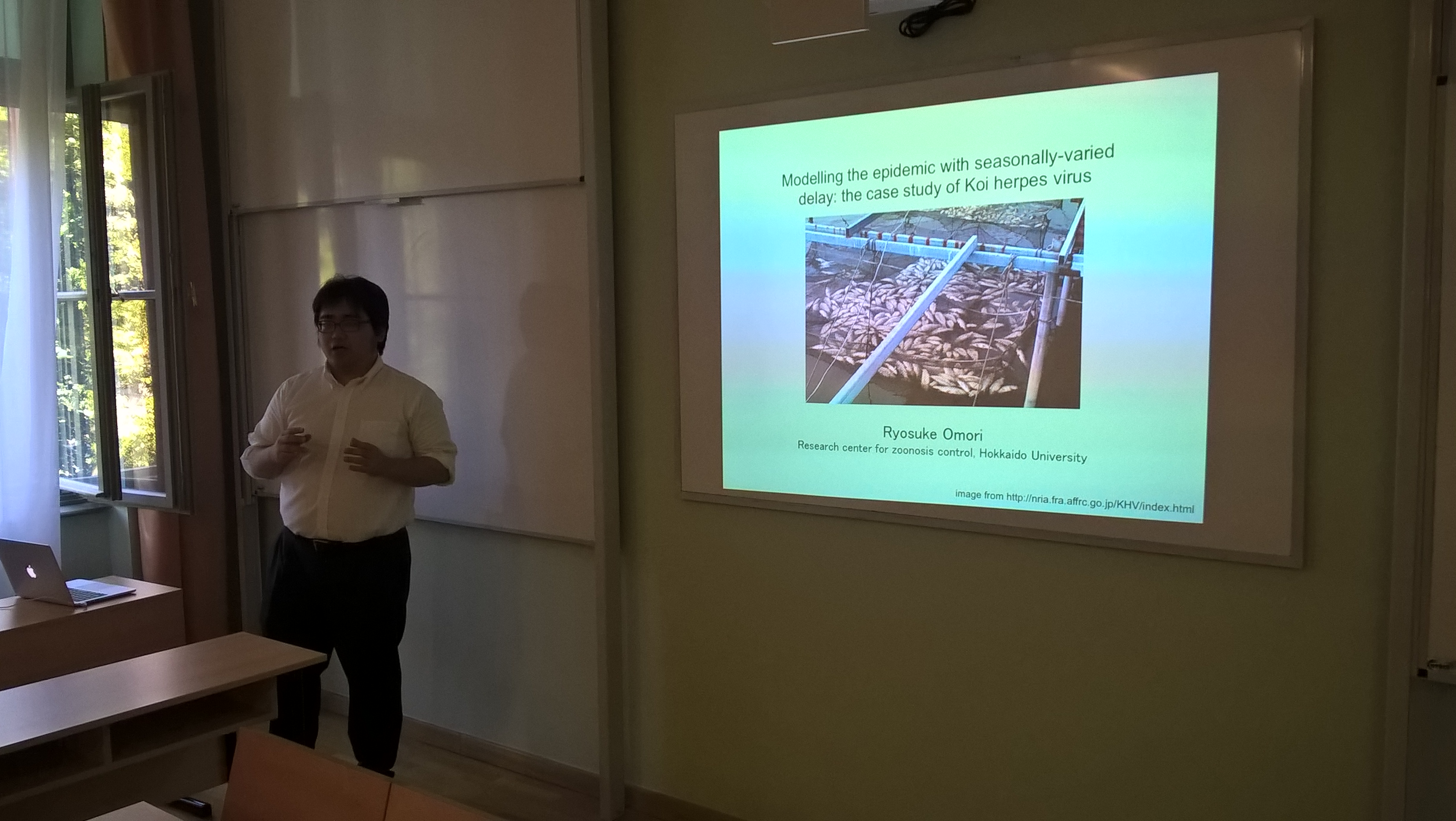Ryosuke Omori
(Research Center for Zoonosis Control, Hokkaido University, Japan)
Modeling the epidemic with seasonally-varied delay:
the case study of Koi herpes virus
Absztrakt:
Koi herpesvirus (KHV) is a highly virulent virus infects with carps, which is a serious threat to aquaculture industry. Outbreak of KHV can be observed during specific seasons, i.e., spring and autumn. The mechanism of seasonality is seasonal variation in the length of sojourn time between the host immune states. After a fish is infected with KHV, there is a temperature dependent delay before it becomes infectious, and a further delay before mortality. Consequently KHV epidemiology is driven by seasonal changes in water temperature. Due to the dependency of disease progression within host on water temperature, it has also been proposed that outbreaks could be controlled by responsive management of water temperature in aquaculture setups. Here we use a mathematical model to analyse the effect of seasonal temperature cycles on KHV epidemiology, and the impact of attempting to control outbreaks by disrupting this cycle.
Koi herpesvirus (KHV) is a highly virulent virus infects with carps, which is a serious threat to aquaculture industry. Outbreak of KHV can be observed during specific seasons, i.e., spring and autumn. The mechanism of seasonality is seasonal variation in the length of sojourn time between the host immune states. After a fish is infected with KHV, there is a temperature dependent delay before it becomes infectious, and a further delay before mortality. Consequently KHV epidemiology is driven by seasonal changes in water temperature. Due to the dependency of disease progression within host on water temperature, it has also been proposed that outbreaks could be controlled by responsive management of water temperature in aquaculture setups. Here we use a mathematical model to analyse the effect of seasonal temperature cycles on KHV epidemiology, and the impact of attempting to control outbreaks by disrupting this cycle.



